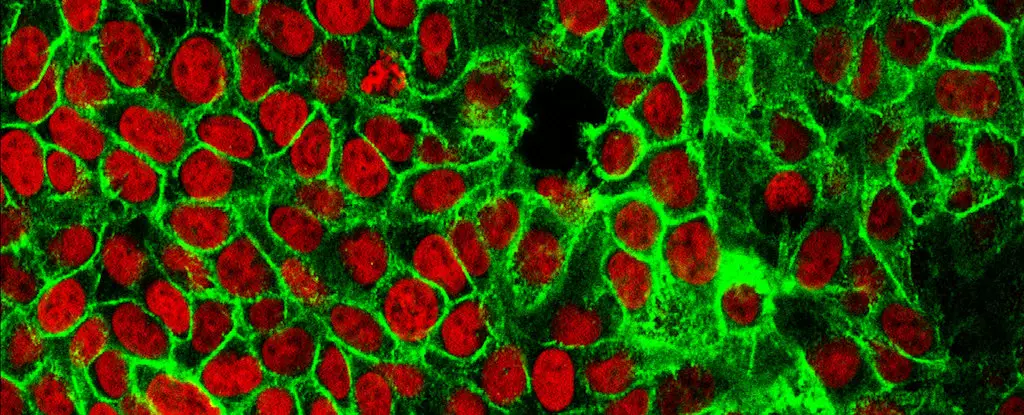Cancer remains one of the leading causes of death globally, claiming more than 10 million lives each year. The key to successful treatment lies in early detection and effective intervention. Unfortunately, cancer often manifests silently, making it challenging to diagnose in its initial stages. A recent study has shed light on a groundbreaking approach that involves identifying ‘fingerprints’ of cancer at an atomic level, using a methodology more commonly associated with geology than medicine. This innovative discovery opens up new possibilities for investigating the progression of various types of cancer and could potentially revolutionize early detection methods.
Lead author Ashley Maloney, alongside her team from the University of Colorado Boulder, collaborated with researchers from the US and Switzerland to explore the natural variations in the distribution of hydrogen isotopes. Hydrogen, a fundamental element, exists in different forms known as isotopes, distinguished by the number of neutrons present. By leveraging these isotopic variances, the researchers aimed to uncover potential insights into the metabolic differences associated with cancer cells. Drawing inspiration from her father’s work as a dermatologist, Maloney sought to delve deeper into the metabolic behavior of cancerous cells compared to healthy cells.
Through laboratory experiments involving yeast and mouse liver cells, the researchers observed a distinct discrepancy in the ratio of hydrogen to deuterium in cells exhibiting high growth rates, such as cancer cells. The preliminary findings indicated a noticeable shift in the isotopic composition of these rapidly dividing cells. While it is crucial to acknowledge that further research is required to validate these observations in a clinical context, the potential implications of early cancer detection are undeniable. Co-author Sebastian Kopf emphasized the importance of timely intervention in improving the survival rates of cancer patients, underscoring the significance of diagnostic tools that can detect metabolic anomalies associated with cancer cells.
A pivotal aspect of the study focused on elucidating the role of hydrogen isotopes in tracking metabolic changes linked to cancer growth. Cells rely on enzymes like nicotinamide adenine dinucleotide phosphate (NADPH) for the distribution of hydrogen atoms essential for various cellular functions. By analyzing the fatty acid composition of yeast and mouse cells, the researchers were able to discern distinctive patterns of hydrogen isotopes in cancerous cells compared to healthy cells. The metabolic shift towards fermentation, characteristic of cancer cells, was reflected in the altered hydrogen isotope ratios, providing a potential avenue for detecting early signs of malignancy.
The groundbreaking findings of this study have opened up new avenues for exploring cancer detection at the atomic level. The realization that hydrogen isotopes could serve as indicators of metabolic aberrations associated with cancer cells offers a promising prospect for refining early diagnostic techniques. The interdisciplinary nature of this research, combining principles from biogeochemistry and medicine, underscores the potential for innovative approaches to cancer detection. As co-author Xinning Zhang aptly summarizes, the application of tools traditionally used in geology to track health and disease in living organisms signifies a transformative leap in the field of cancer research. Looking ahead, further studies are warranted to validate these findings and establish the utility of hydrogen isotopes as diagnostic markers for cancer detection in clinical settings.


Leave a Reply